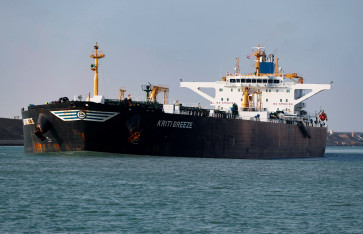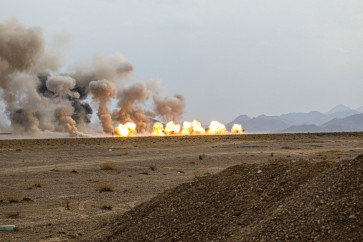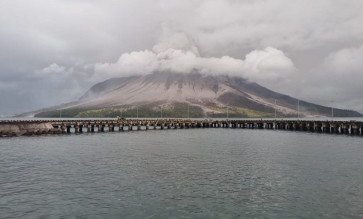Community-based watershed rehabilitation
Rehabilitation of critical watersheds in Indonesia was started at the end of the 1960s, following the big flood of the Bengawan Solo River in Central Java
Change Size

R
ehabilitation of critical watersheds in Indonesia was started at the end of the 1960s, following the big flood of the Bengawan Solo River in Central Java. A large amount of resources had been invested to do this.
The most visible, costly and ambitious efforts have been externally funded projects aimed at specific watersheds, starting with the Upper Solo project in eastern Central Java, which was sponsored by the United Nations' Food and Agriculture Organization (FAO) during the early 1970s.
With some variations, similar projects have been established in other parts of Java and the outer islands since about the same time. Critical watershed rehabilitation generally followed the model developed during the Upper Solo project: i.e., implementing conservation farming in sloped areas by applying soil and water conservation methods, which combine vegetative and physical-mechanical or civil structure techniques.
Although none of the watershed rehabilitation projects have yet been subjected to comprehensive evaluation, many experts have judged that the efforts have resulted in limited environmental impacts and a low return of investment in terms of increasing agricultural productivity and achieving soil- and water-related benefits at the watershed level.
In most cases the programs consistently showed three weaknesses: the use of unsuitable and non-sustainable technology, a lack of coordinated planning among development sectors and insufficient participation by local farmers coupled with a lack of research into farming systems relating to soil conservation technology.
Most of the projects therefore lacked efficiency and impact and wasted limited resources.
Government-initiated efforts to rehabilitate watersheds have had several key weaknesses. For example, the rehabilitation areas were usually large watersheds (like the Upper Batanghari River, the Cimanuk River, the Solo River, etc., which are thousands of kilometers in size) and working on large watershed areas is complicated, as it is impossible to demonstrate the off-site impacts of the interventions because of the resulting complex biophysical and social problems.
Also, unsustainable soil conservation models implemented at smallholder farm level failed to address the roots of the problems because most initiatives put a lot of attention on enhancing awareness and technical knowledge, but neglected social factors that are often provide more serious constraints.
In addition, as most initiatives were only able to provide direct incentives to a limited target group within the limited time-span of a project, they were unable to provide indirect incentives or enabling conditions for sustainable rain-fed (dry land) agriculture.
Finally, the initiatives only made limited efforts to strengthen natural resource governance by villages, such as for sustainable land utilization zoning at the inter-village level in the upland areas.
Due to improper top-down government initiatives, so far there have been few success stories about the program, despite the huge resource investment. New approaches have been proposed to enhance the future achievements of the program.
First, the area of a watershed rehabilitation unit should be small or micro in size (like, 1,000 hectares), rather than a large watershed. Second, the key initiator and implementer of the initiatives should be an informed community, a village government, rather than government or foreign agencies.
Community and relevant constituents living in or using upper watershed natural resources should become the subjects of watershed rehabilitation efforts.
Referring to Law No. 6/2014: the roles of district administrations and the central government must only be as supporters or facilitators of village development.
On the other hand, the government should provide capacity-building to establish informed village governments, so as to enable village governments to formulate environmentally friendly (green) mid-term development plans (RPJM-Desa), which wisely allocate a certain part of a village's budget for environmental restoration.
An empowered village government will be able to integrate the use of village budgets and central government funds and initiatives to speed up critical forest and land rehabilitation within and surrounding the village administrative boundary.
For example, a village government, in collaboration with other villages, can initiate the rehabilitation of a small watershed unit (involving five villages or more) using the village budgets and the Forestry Ministry's forest and land rehabilitation (RHL) funds.
Similarly, village governments will be able to speed up the implementation of the Forestry Ministry's social forestry program, such as the HKM (Hutan Kemasyarakatan, development of community forestry on state forest area) and the HD (Hutan Desa, establishment of village forest at state forest area).
________________
The writer is program director of the Tropenbos International Indonesia Program.









